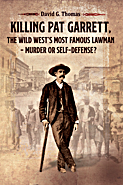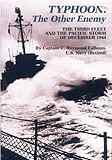|
|
||||||||||||||||||||||||
 |
||||||||||||||||||||||||
|
|
||||||||||||||||||||||||
|
||||||||||||||||||||||||
|
|
||||||||||||||||||||||||
 |
||||||||||||||||||||||||
 |
||||||||||||||||||||||||
 |
||||||||||||||||||||||||
|
|
||||||||||||||||||||||||
|
|
|
|
Typhoon: The Other Enemy |
|
Book Review by Gerald W. Thomas, VT-4 |
|||||
|
As commanding officer of a ship that came close to destruction in the typhoon of December, 1944, Calhoun was in an unparalleled position to document the tragic ordeal that claimed 778 men, 3 destroyers, and more than 100 aircraft. The destroyers lost were the USS Hull, USS Monaghan, and USS Spence. Calhoun relates his experience aboard his ship, the USS Dewey, as it repeatedly rolled to its maximum limit and threatened to overturn. At one point, he estimates the ship's roll to be about 80 degrees. Calhoun examines the court of inquiry's findings following the investigation of the events leading up to the storm. He provides documentation that the Bureau of Ships was negligent in not following through on the reported instability of the Farragut-class destroyers, two of which were lost in the storm. Repercussions from this fleet disaster reached Admiral Nimitz and went on to the Washington bureaucracy. There seemed to be plenty of blame to go around, but the focus of the concern was on the decision of Admiral Halsey and his aerological advisors. The court of inquiry also made recommendations about weather forecasting. "Weather ships should be stationed in the area and at least two planes daily be assigned as weather reconnaissance planes to cover sectors where unusual weather was expected." Aboard the USS Essex, a number of aircraft torn loose from their tie-down lines were destroyed or damaged, but no lives were lost. On December 16, as the storm was brewing, Lt (jg) L. A. Watson (VF-4) was forced to make a water landing after a fighter sweep on the airfields in the Philippines and he rode out the typhoon aboard the USS Ingersoll. His report is available here. In Chapter 17 of Torpedo Squadron Four: A Cockpit View of World War II, I cite the ships log from the Essex: "The ship was refueling at sea on 17 December as the storm was brewing. We were unable to launch search and rescue missions due to rough seas until the afternoon of 19 December, and we continued to search for survivors for the next 2 days. The destroyers and DEs that were on the scene were engaged in continuous rescue operations." Calhoun states that "Ninety officers and men were recovered. Seven hundred and ninety had been lost. For those who may wonder if the search effort was adequate in light of the number of men known to be missing and the circumstances then obtaining, there was a war to be fought, and that had to be the top priority. The ships of the Third Fleet needed to anchor in a safe harbor and repair the damage wrought by the storm." Admiral Halsey, who was on the USS New Jersey, later wrote in his autobiography: "No one who has not been through a typhoon can conceive its fury. The 70-foot seas smash you from all sides. The rain and scud are blinding; they drive you flat-out, until you can't tell the ocean from the air. At broad noon I couldn't see the bow of my ship, 350 feet from the bridge… this typhoon tossed our enormous ship as if she were a canoe… we could not hear our own voices above the uproar." The subtitle of Calhoun's book, "The Other Enemy," brings back memories, not only of the typhoon, but also of the many times bad weather took the lives of Navy airmen during WWII.
For a review of an excellent, new book on the typhoon, see Halsey´s Typhoon, The True Story of a Fighting Admiral, an Epic Storm, and an Untold Rescue. |
|||||
|
Air Group 4 - "Casablanca to Tokyo" |
|||
|
|
|||

